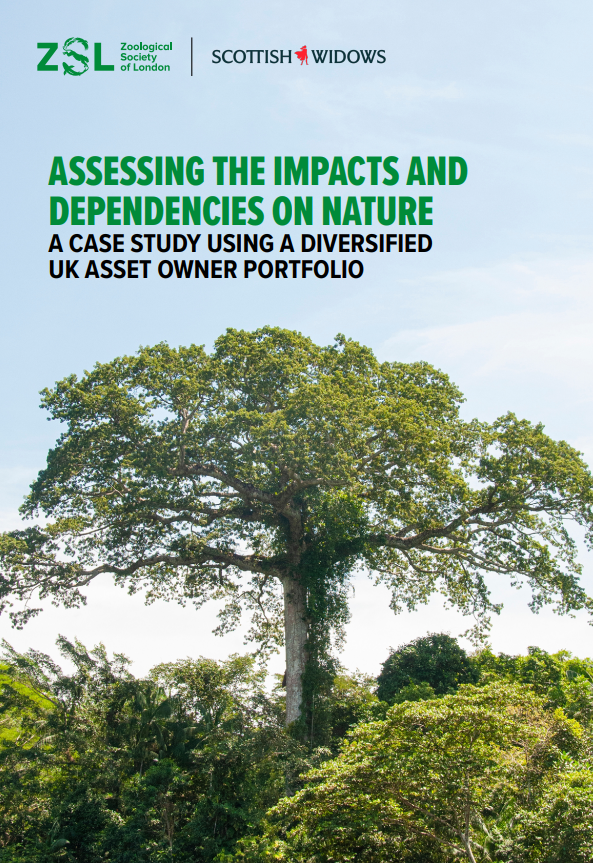Assessing the Impacts and Dependencies on Nature: A Case Study with Scottish Widows
Why nature is rising up the finance agenda
Nature and biodiversity are becoming central concerns for investors, and rightly so. According to PwC, approximately 55% of global GDP – equivalent to around US$58 trillion – is moderately or highly dependent on nature, encompassing vital ecosystem services like clean water, pollination, and climate regulation. However, biodiversity is under threat, and financial institutions are increasingly expected to assess how their investments both rely on, and impact nature.
A first-of-its-kind case study with Scottish Widows
To better understand their nature-related risks and opportunities, Scottish Widows, one of the UK’s largest pension providers, partnered with ZSL to assess their diversified investment portfolio. This first-of-its-kind case study provides a real-world example of how an asset owner can begin to navigate nature-related issues using openly available tools, sector-level analysis, and frameworks such as the Taskforce on Nature-related Financial Disclosures (TNFD) LEAP. It highlights practical insights and common challenges, like limited company and location-specific data, while showing that meaningful progress is possible. The collaboration also served as a valuable capability-building exercise, helping inform future analysis and investor action to better manage environmental risks and improve customer outcomes. Our case study shows how an investor can:
- Identify high-impact and high-dependency sectors using the ENCORE tool
- Understand portfolio exposure to the five key drivers of biodiversity loss
- Translate findings into actions for engagement, stewardship and strategy
- Navigate data gaps and select fit-for-purpose assessment methods
- Build internal capability for nature-related risk management
Why it matters now
Financial institutions can no longer afford to overlook nature-related risks and impacts. As global biodiversity declines and regulatory and market expectations rise, understanding how portfolios interact with nature is becoming essential. Nature loss poses material financial risks, whether through disrupted supply chains, stranded assets, or reputational damage, and financial institutions are expected to play a key role in reversing this trend. Our recent case study helps demonstrate how nature-related risks and opportunities can be assessed in practice. Finally, with nature and climate inextricably entwined, acting now is critical to safeguard both long-term financial value, as well as planetary health.
Our case study is relevant for:
- Pension funds and asset owners exploring biodiversity risk
- ESG and stewardship professionals building engagement strategies
- Sustainability teams and consultants navigating TNFD alignment
- Anyone in the finance sector seeking to understand their role in halting biodiversity loss
Work with us on nature-related risk and opportunity
If you’re interested in learning more about this work or would like to explore how we can support your organisation in assessing nature-related risks and opportunities, we’d love to hear from you. To get in touch or find out more about our advisory services, visit Advisory Services and Training | ZSL

